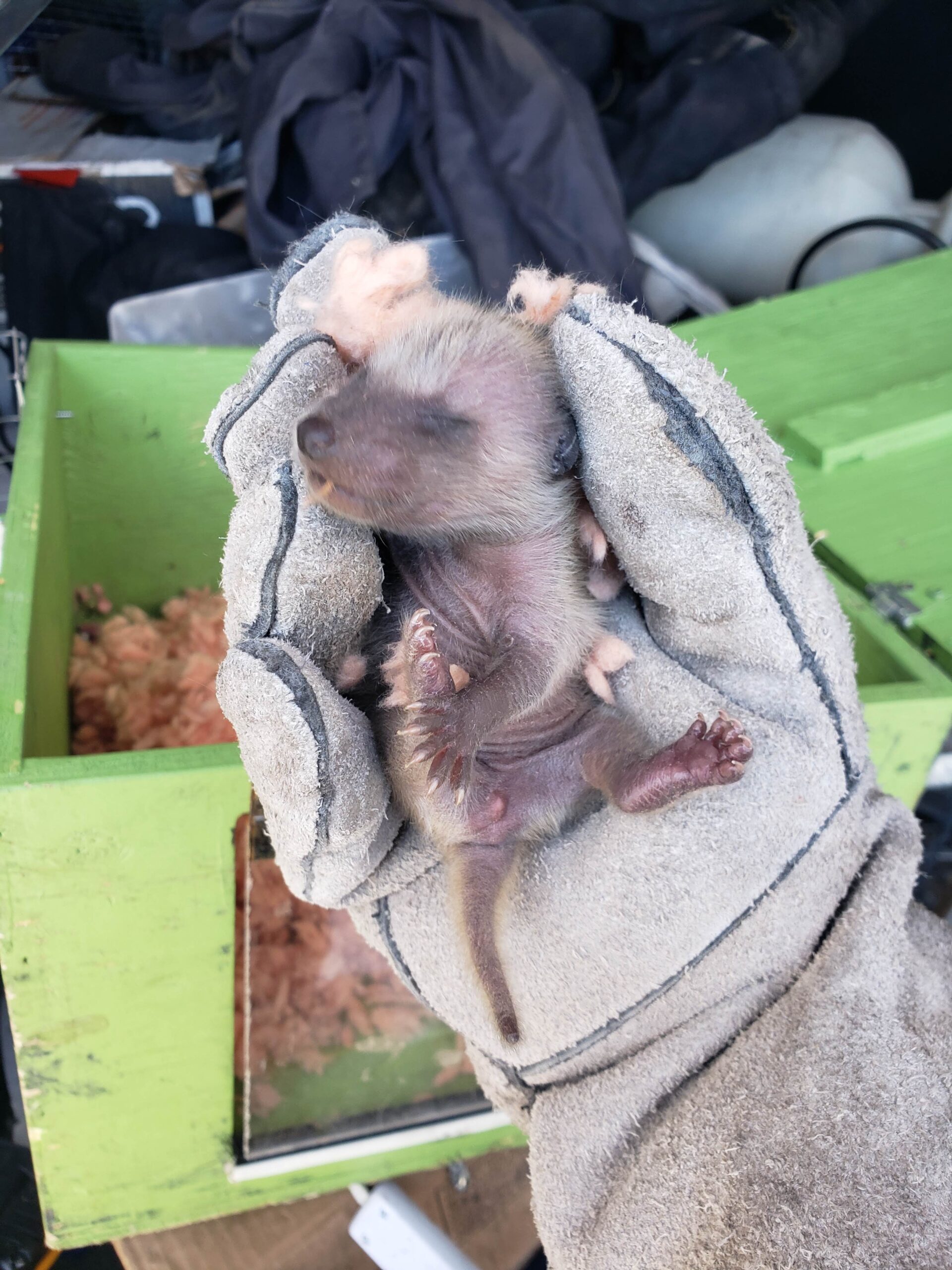Playful puppies, cuddly kittens, chirping chicks, everyone loves baby animals, especially when they are all cute and fluffy. At Skedaddle the Wildlife Technicians are no different and get extremely excited about the baby season. If you ask any of them, they will tell you that there is little in the world of wildlife control that beats the experience of your first successful baby removal. It is highly rewarding to see baby animals reunited with their mothers and carried away to the safety of a new den or nest.
As the Weather Heats up so Does the Baby Removal Business
As spring arrives so do all the animal babies and many quiet attics suddenly become raucous nurseries, turning the baby season into one of the busiest times of year for Skedaddle Wildlife Technicians. “But that is what we train for,” says Skedaddle Technician Chris Stevens, “in addition to daily on the job training, we have an annual “spring tune-up” which is a day of training devoted to learning effective safe baby searches.” And this training is not just for newbies, the more experienced also need to brush up on their search and removal skills before baby seasons gets underway.
Baby Removal Is a Delicate Job
At Skedaddle we know that a spring call-out will usually involve babies and as soon as our technicians arrive at a home, they will do a thorough inspection of the property, paying particular attention to possible nesting sites and dens. This is hot, dirty work that requires them to crawl around in sweltering attics but that does diminish their dedication to the task at hand and they will scratch in all the darkest corners to locate the tiny, helpless animals. And whether it is your first baby removal ever or the first of the season when you finally find that litter, it makes all the sweat and discomfort worthwhile.
Raccoon babies are blind and deaf for the first few weeks of their lives and can’t simply be chased out of your attic. They need to be located and gently removed by hand and this is no easy task. Mother raccoons are very protective of their babies and will go to great lengths to keep them well hidden. Finding raccoon babies in a large dark attic is a challenge, but experience has taught us where to look and where the raccoons go, we follow. Our wildlife technicians are trained to use not only their eyes but also their ears to search high and low and locate babies that are tucked away in the darkest corners and hardest to reach recesses like soffits and wall cavities.
Once we have located the raccoon babies, then the real challenge begins. A mother raccoon is very protective of her young and becomes extremely aggressive when defending her litter. Our technicians are trained to always treat mothers with care and respect. They know how to stay calm and remain in control of the situation during the extraction process. This is all part of ensuring a safe and effective removal. Once all the babies have been retrieved, they are placed in a heated baby-box and this is left outside the home where the babies can be reunited with their mother. She will then move them away from your home to an alternative den site. Watching the mother carry her babies off into the undergrowth puts a smile on everyone’s face and is our reward for a job well done.
Successful Baby Removal Is a Job for the Experts
Chris Stevens has years of experience in the raccoon removal business and his advice to homeowners is that as soon as they suspect they may have animals in their home, definitely call in the professionals. According to Steve, “approaching a nursing mom or attempting to remove them via trap or other means will usually separate the family. Trapping the animals in or out of the house can also mean more damage to the home and a more costly repair.”
Using hands-on removal techniques to keep raccoon families safe and together is not only humane, but it also reduces the risk of further damage to your property. A mother raccoon that has been separated from her babies is a desperate animal and she will do whatever it takes to try and find a way back into your home, tearing at soffit and vents and ripping off tiles, causing thousands of dollars of damage to your property. Simply trapping and relocating the mother is not a suitable solution to the problem. Without their mother to nurse them, the baby raccoons chances of survival are limited so leave it to the professionals.
Prevention Is Always Better Than Cure
It is always better to prevent animals from making your home their home, rather than trying to evict them once they have already moved in and made themselves comfortable. As soon as our technicians know that there are no more animal families living in your attic or basement, and the area has been thoroughly cleaned and sanitized, they will then set about making your home animal proof.
We have years of experience animal proofing homes and we know all their clever tricks. We have seen first-hand the lengths that wildlife will go to in order to gain access to your property. Crawling into tiny holes, gnawing through wood, shimmying up drainpipes, ripping off shingles, they know where all the weak points are in your property and how to exploit them to gain access to a nice warm nesting site.
All New Skedaddle Hires and Seasoned Employees are Extensively Trained
Removing baby animals from your attic or basement is a delicate task that needs to be carried out by a professional wildlife control expert with the training, experience, and equipment to do the job humanely. At Skedaddle, we ensure that all our staff are extensively trained and know how to deal with difficult wildlife removal situations and safely relocate animal families away from your home.



